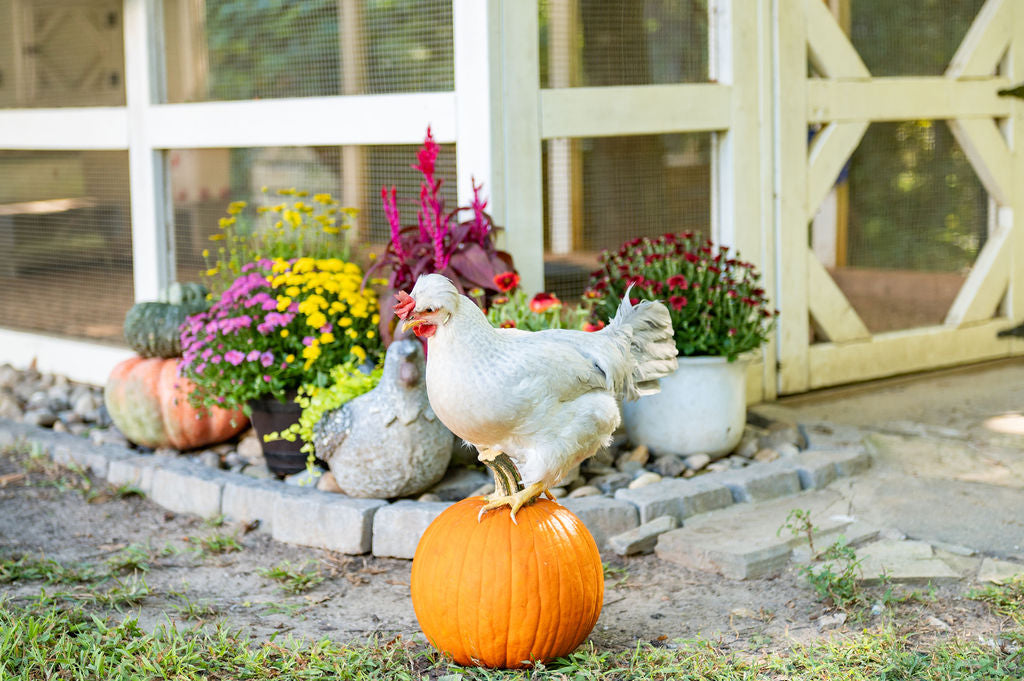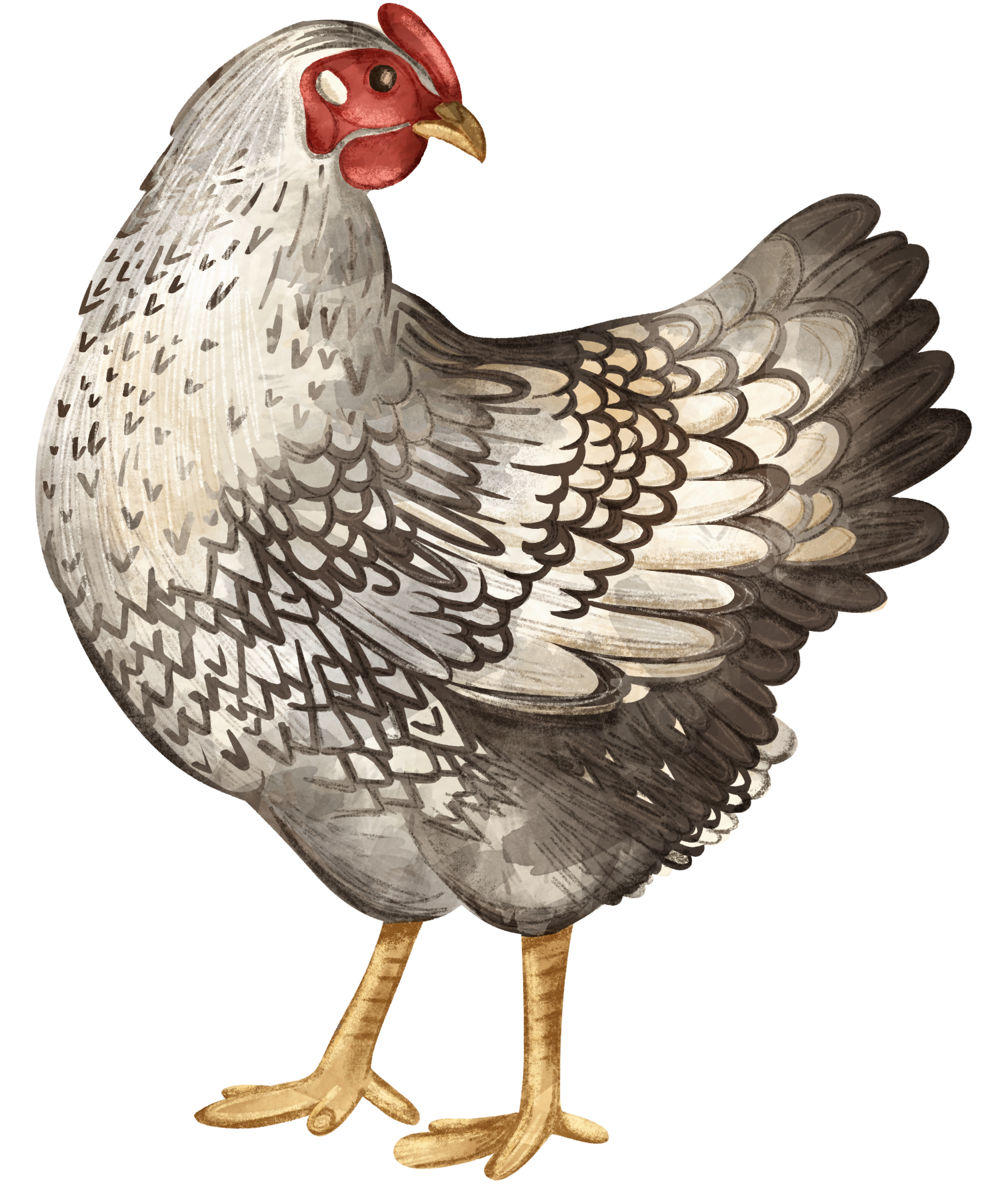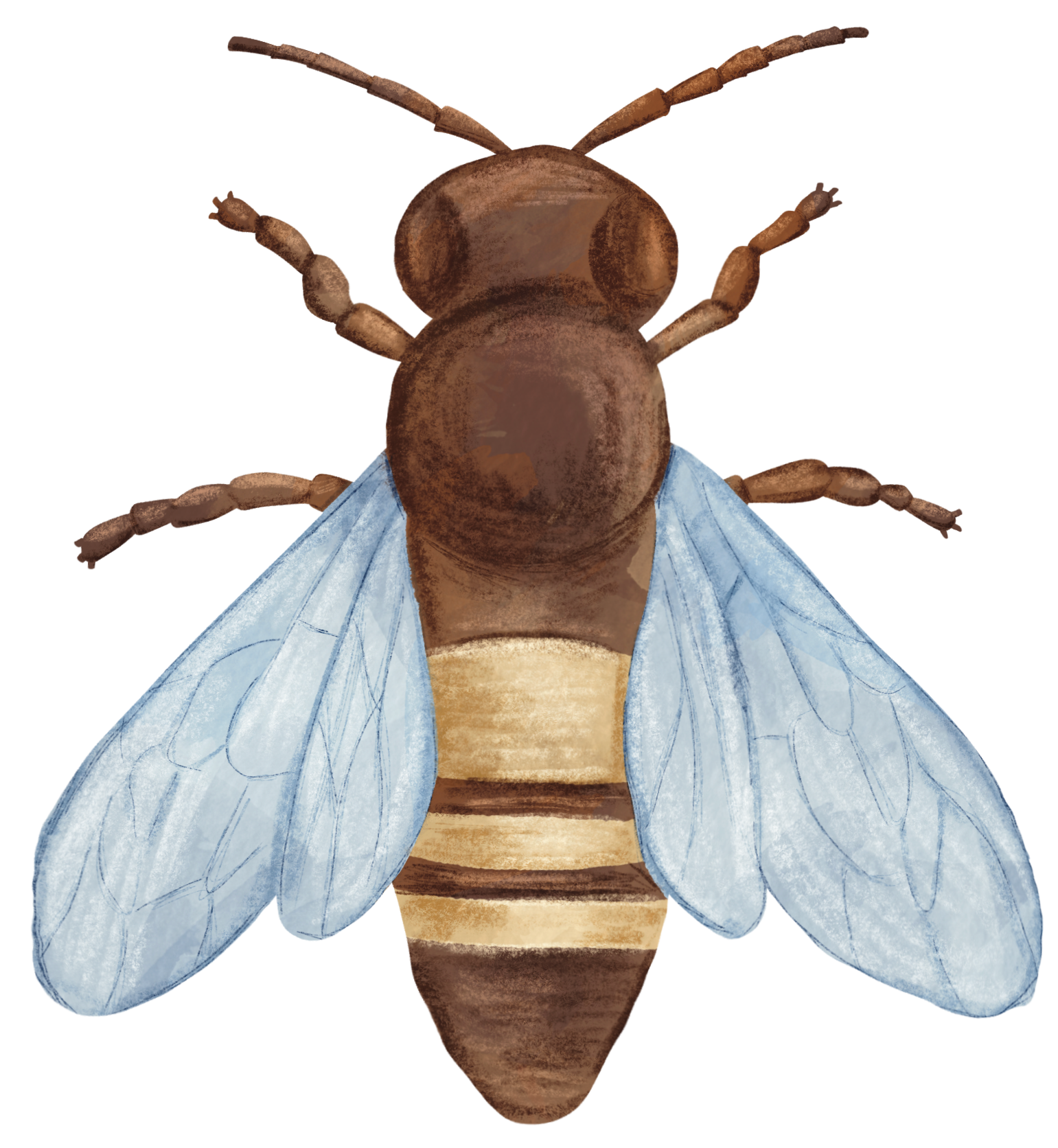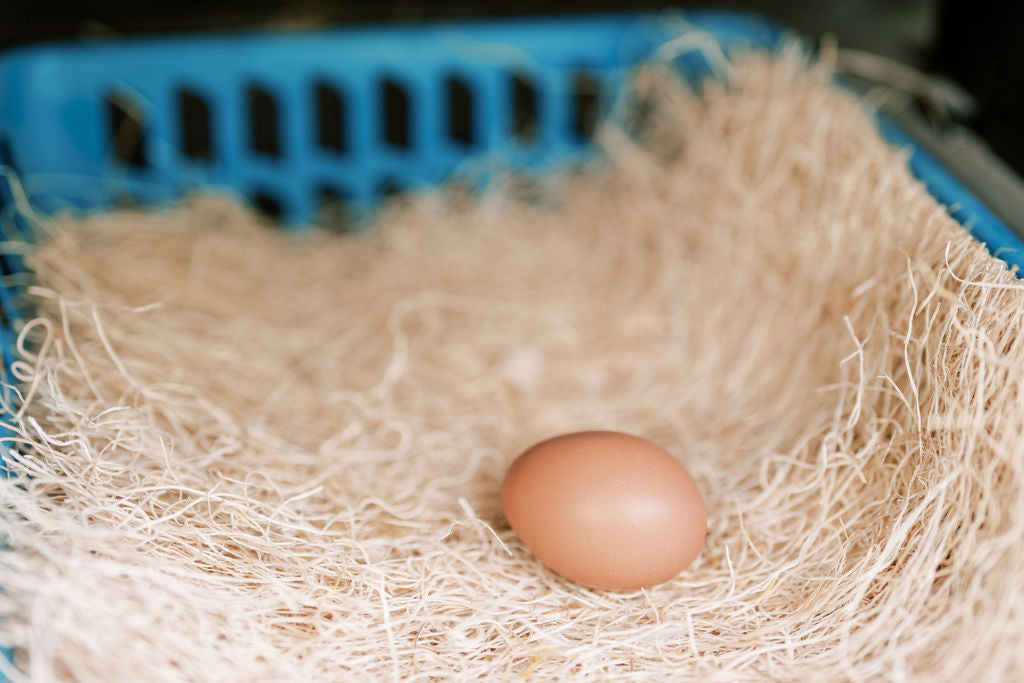
How to Treat Chicken Mites: Red Poultry & Northern Fowl Mites
I was gathering eggs one evening when something caught my eye—dark specks that looked like coffee grounds scattered on several eggs in the nesting box. Odd, I thought— how did my shelf bedding get in this nesting box? But when I took a closer look, those specks started moving. They weren't coffee grounds at all—they were chicken mites.
I wasn't expecting to find mites that evening, but I wasn't entirely surprised either. I'd been hearing from more and more chicken keepers this season dealing with mite problems, so it was already on my mind to write about!
These tiny parasites (in this specific case Red Poultry Mites (RFM)) can show up even in well-maintained coops and cause serious problems like stress, weight loss, poor feather quality, and drops in egg production. If mites have been making the rounds in your area, here's everything you need to know to spot and treat them quickly.


The Key Differences Between Chicken Mite Types: Northern Fowl vs. Red Poultry
Chicken mites may all sound the same at first, but understanding the difference between Northern Fowl Mites and Red Poultry Mites is essential for effective treatment. If you treat the wrong thing, or only focus on the birds and forget the coop, you’ll end up frustrated and the infestation will continue. Here’s how the two compare:
Northern Fowl Mites (NFM): These mites are clingy and persistent. They live right on your chickens 24/7, feeding, laying eggs, and completing their life cycle entirely on the host bird. Because they stay on the chicken, you can find them any time of day.
Red Poultry Mites (RFM): These sneaky vampires are harder to detect because they hide in the coop environment during the day. At night, they crawl out of cracks, crevices, and roosts to feed on your chickens, then scurry back into hiding at dawn. They don’t live full-time on the chicken, which makes them trickier to diagnose.
The difference matters because NFM infestations demand you treat the chickens themselves, while RFM infestations require you to focus heavily on the coop environment. If you only spray the birds but skip the roosts, red mites will come back in no time.
How to Inspect for a Chicken Mite Infestation
Finding mites early makes treatment easier! Many flock owners don’t realize they have a chicken mite issue until birds start losing feathers or showing signs of anemia. Here’s how to inspect effectively:
Northern Fowl Mites (NFM)
Check your chickens during the day. Part the feathers and look for clusters of mites or tiny white eggs attached at the feather base.
Monitor your flock’s appearance: ragged feathers, irritated skin, and pale combs can all be signs of a chicken mite problem.
Watch behavior: restless birds, weight loss, and reduced egg production may point to mites feeding continuously.
Red Poultry Mites (RFM)
Go into the coop at night with a flashlight - it’s when these mites are most active.
Look closely at roosts and around your chickens’ feet, feathers and combs.
Use the paper towel test: a tip I just learned from my friend at Happy Chick Coop: rub a paper towel on the roosts at night. If you see red streaks or smears, you’ve confirmed the presence of red mites.
You may also notice chickens reluctant to go into the coop at night, a common sign that something is biting them in the dark.

Chicken Mite Treatment with Elector PSP
When a chicken mite infestation strikes, you need a product that truly works. Elector PSP is widely considered one of the most effective and safest options for chicken mite treatment. It targets both Red Poultry Mites and Northern Fowl Mites, breaking their life cycle and helping your flock recover.
Why Elector PSP Works
Elector PSP contains spinosad, which disrupts the nervous system of mites and other parasites. Unlike some older chemical treatments, it is approved for use in poultry and is effective even against resistant mite populations. It’s also safe when used correctly, making it a top choice for backyard flock owners.

Treating Red Poultry Mites: A Chicken Mite Prevention Plan
Focus on the coop and environment, since that’s where these mites live most of the time.
Start with a deep clean: strip the coop completely and remove and burn all bedding. Don’t compost infested bedding - it allows mites to survive.
Spray every surface, crack, crevice, roost, and nest box with Elector PSP solution. Pay special attention to corners and seams where mites love to hide.
Don’t skip the run! It took 1 gallon of solution to fully cover my 4x8 coop and 16x8 run.
Spray your chickens as well, since mites will still crawl onto them at night. Apply the solution to the neck, under wings, vent, and back, making sure it reaches the skin.
Repeat treatment after 7–10 days to ensure newly hatched mites are eliminated.
Treating Northern Fowl Mites: Direct Chicken Mite Control
The focus here is the birds themselves, since these mites live on them full-time.
Spray every chicken thoroughly with Elector PSP. Pay close attention to the vent, under wings, neck, and back where mites cluster.
Clean bedding and spray roosts and nest boxes once to prevent re-infestation.
Recheck your flock in 7-10 days. If mites are still present, repeat treatment on every bird.

Extra Steps for Chicken Mite Prevention
Beyond treatment, prevention plays a huge role in keeping mites away. Here are some extra tips for long-term chicken mite control:
Maintain coop hygiene: Regularly remove soiled bedding, scrub roosts, and disinfect nest boxes. Clean coops are less attractive to mites.
Provide dust baths: Chickens naturally fight parasites by dust bathing. Offer a dry area filled with sand, soil, or wood ash for them to roll in.
Monitor flock health: Pale combs, weight loss, or decreased egg laying should always trigger an inspection for chicken mites.
Quick Reference Checklist
✔️ Inspect birds (NFM) and coops (RFM) regularly
✔️ Use the paper towel test at night for red mites
✔️ Spray chickens directly for Northern Fowl Mites
✔️ Deep clean and spray the coop for Red Poultry Mites
✔️ Repeat treatment in 7–10 days
✔️ Maintain coop hygiene and provide dust baths

Final Thoughts: Stop a Chicken Mite Infestation Before It Spreads
Chicken mites are more than a nuisance - they can drain the health and happiness right out of your flock. But the good news is that with regular inspections, good coop hygiene, and Elector PSP in your toolkit, you can stay ahead of these pests. Both Northern Fowl Mites and Red Poultry Mites can be controlled if you know what to look for and act quickly.
NFM live on chickens, RFM live in the coop. By learning the difference and following a consistent chicken mite treatment routine, you’ll keep your flock safe, comfortable, and productive.
Stay proactive, keep an eye on your flock, and don’t let a chicken mite infestation take over your happy backyard coop!
Get Your FREE Building Plans
Ready to upgrade your coop with this efficient litter shelf and storage setup? Simply fill out the form below to download our FREE step-by-step building plans and get started today!

